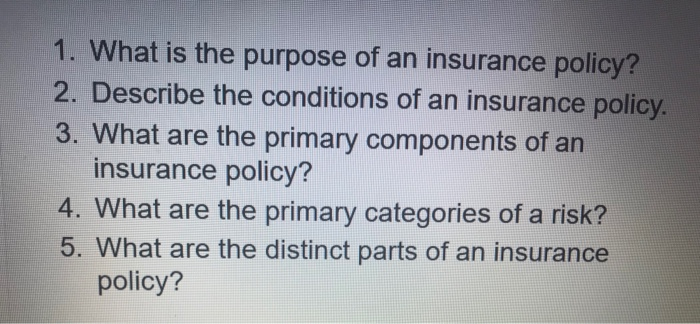The Best Guide To Pacific Prime
The Best Guide To Pacific Prime
Blog Article
Some Known Factual Statements About Pacific Prime
Table of ContentsHow Pacific Prime can Save You Time, Stress, and Money.Pacific Prime Fundamentals ExplainedSome Known Incorrect Statements About Pacific Prime The smart Trick of Pacific Prime That Nobody is Talking AboutAn Unbiased View of Pacific Prime

This is since the data were collected for a duration of strong financial efficiency. Of the approximated 42 million individuals who were without insurance, just about regarding 420,000 (concerning 1 percent) were under 65 years of age, the age at which most Americans become qualified for Medicare; 32 million were adults in between ages 18 and 65, around 19 percent of all grownups in this age; and 10 million were kids under 18 years old, about 13.9 percent of all youngsters (Mills, 2000).
These price quotes of the number of persons without insurance are generated from the annual March Supplement to the Existing Populace Survey (CPS), performed by the Census Bureau. Unless or else noted, nationwide price quotes of individuals without wellness insurance and percentages of the population with various kinds of protection are based on the CPS, the most extensively used source of price quotes of insurance protection and uninsurance prices.
The Main Principles Of Pacific Prime

Still, the CPS is especially useful because it creates yearly estimates reasonably quickly, reporting the previous year's insurance policy protection estimates each September, and since it is the basis for a regular set of quotes for more than twenty years, permitting evaluation of trends in coverage with time. For these reasons, along with the extensive use of the CPS in various other studies of insurance policy protection that exist in this report, we count on CPS price quotes, with constraints noted.

The price quote of the variety of uninsured individuals broadens when a population's insurance policy condition is tracked for numerous years. Over a three-year duration starting early in 1993, 72 million people, 29 percent of the U.S. https://hub.docker.com/u/pacificpr1me. populace, were without insurance coverage for at least one month. Within a solitary year (1994 ), 53 million people experienced a minimum of a month without insurance coverage (Bennefield, 1998a)
Six out of every 10 without insurance adults are themselves employed. Although functioning does enhance the possibility that and one's household members will have insurance, it is not a warranty. Even participants of families with two full time breadwinner have practically a one-in-ten chance of being without insurance (9.1 percent uninsured rate) (Hoffman and Pohl, 2000).
Pacific Prime for Dummies
New immigrants account for a considerable proportion of people without medical insurance. One evaluation has actually connected a significant part of the current growth in the dimension of the united state uninsured population to immigrants that showed up in the nation in between 1994 and 1998 (Camarota and Edwards, 2000). Recent immigrants (those that came to the USA within the previous four years) do have a high price of being uninsured (46 percent), yet they and their youngsters account for best site just 6 percent of those without insurance policy across the country (Holahan et al., 2001).
The relationship between medical insurance and access to care is well established, as documented later in this phase. The relationship in between health and wellness insurance coverage and health and wellness outcomes is neither direct nor straightforward, an extensive professional and health services research literature web links health insurance protection to enhanced access to care, better high quality, and enhanced individual and population health standing.
Levels of evaluation for examining the effects of uninsurance. It focuses especially on those without any type of wellness insurance policy for any length of time.
The 7-Minute Rule for Pacific Prime
The troubles encountered by the underinsured are in some respects similar to those dealt with by the without insurance, although they are generally less extreme. global health insurance. Uninsurance and underinsurance, nevertheless, involve noticeably different plan concerns, and the approaches for addressing them may differ. Throughout this research study and the five records to follow, the major focus gets on individuals with no medical insurance and thus no aid in spending for health treatment beyond what is readily available through charity and safety and security net establishments
Wellness insurance policy is an effective factor impacting receipt of treatment due to the fact that both individuals and physicians respond to the out-of-pocket price of services - https://telegra.ph/Pacific-Prime-Your-Trusted-Source-for-International-Health-Insurance-04-02. Medical insurance, nevertheless, is neither necessary nor adequate to access to clinical services. Nevertheless, the independent and straight effect of medical insurance coverage on accessibility to wellness solutions is well developed.
Others will certainly obtain the health and wellness treatment they need even without medical insurance, by paying for it out of pocket or seeking it from companies that use treatment totally free or at extremely subsidized rates. For still others, medical insurance alone does not make certain receipt of treatment since of various other nonfinancial barriers, such as an absence of healthcare service providers in their neighborhood, restricted accessibility to transport, illiteracy, or etymological and cultural distinctions.
An Unbiased View of Pacific Prime
Formal research study regarding without insurance populaces in the United States dates to the late 1920s and very early 1930s when the Committee on the Cost of Treatment generated a series of records about financing physician office sees and hospital stays. This problem ended up being significant as the numbers of medically indigent climbed during the Great Anxiety.
Report this page